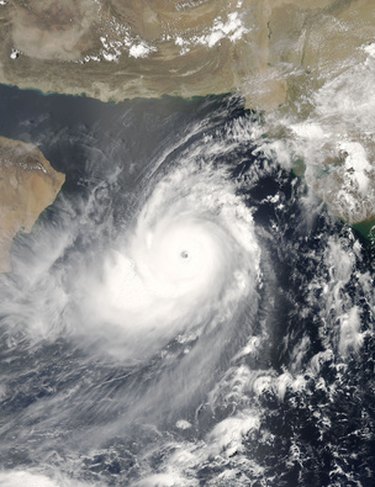
Throughout history, numerous techniques and experiments were performed by meteorologists to predict the weather with greater efficacy over time. Due to substantial advances in technology, it is now possible to forecast the weather days and even months in advance—which was not truly possible before the mid-20th century. The use of computer models became widespread mainly throughout the 1960s, as the first weather satellites were launched. The types of computer models that are used in forecasts depend mostly on the type of climate and weather conditions.
Climate Models
Video of the Day
Climate models are primarily used to forecast substantial changes in the earth's climate. Climate is the average weather conditions in an area for a prolonged period of time. Therefore, climate models use a combination of statistical and current data to provide a reasonable forecast. The CFS is one of the primary climate models used for forecasting planetary scale weather conditions such as: El Nino, Madden Julian Oscillations (MJO), and monsoons.
Video of the Day
Mesoscale Models
Mesoscale models are mainly used to forecast the weather locally. Mesoscale in meteorological terms means the atmospheric conditions ranging usually from two to 20 km. Synoptic and climate models usually do not have enough resolution to forecast localized weather conditions such as: single cellular thunderstorms and tornadoes. The North American Model (NAM) is commonly used to forecast local weather conditions.
Dynamic Models
Dynamic models are the most sophisticated and costly tools used to forecast the weather. Dynamic models use advanced fundamental equations of the atmosphere to predict changes in the weather based on current conditions. Despite their efficiency, dynamic models can make errors during the initial runs. According to the National Hurricane Center (NHC), the GFS, ECMWF, NOGAPS, UKMET, and CMC, are some of the dynamic models used for forecasting.
Statistical Models
Statistical models are primarily used to help meteorologist provide accurate analog forecasts. Statistical models use data from previous storms and weather conditions to help meteorologists get a better idea of how to track current weather systems. Statistical models are commonly used to track tropical and mid latitude cyclones. If the dynamical model consensus is not reasonable, meteorologists often use statistical models to provide better forecasts.
Efficiency of Computer Models
Although atmospheric computer models are effective tools for weather forecasting, they are not impeccably accurate. Computer models are usually less efficient during the preliminary runs. For instance during the first stages of tropical cyclogenesis (tropical cyclone formation), computer models are usually not initialized enough to provide a reasonable forecast. Long range forecasts (beyond a week) are usually less accurate, because there are many atmospheric factors that can come into play beyond that time. Dynamic models are most accurate for three- to five-day forecasts.